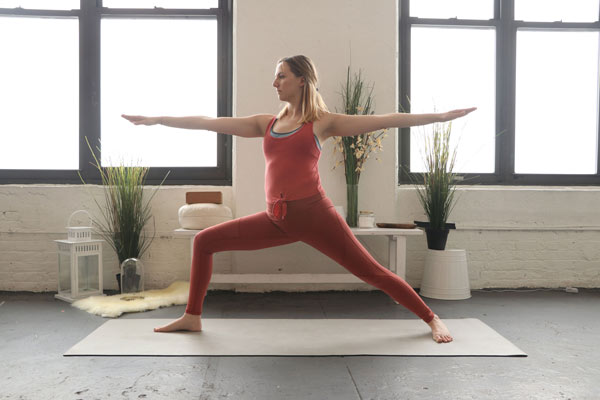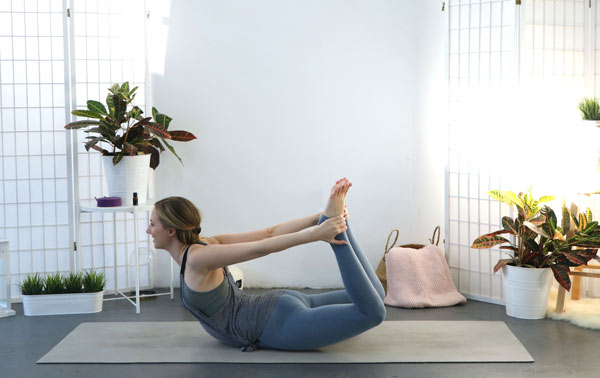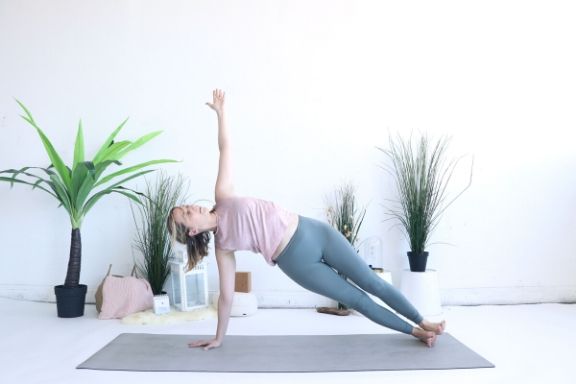 Kapha is one of the principal doshas responsible for forming the structure of the body. It primarily focuses on the muscles, tendons, and bones. Kapha is a mixture of the Earth and Water elements, and the earthy composition makes Kapha deliver strength and stamina. However, an excess of these earthy elements can lead to a gain in weight and lethargy. Moreover, the water in Kapha’s composition has a close relationship with fluids within the body; it regulates the same for carrying out important bodily functions.
Kapha is one of the principal doshas responsible for forming the structure of the body. It primarily focuses on the muscles, tendons, and bones. Kapha is a mixture of the Earth and Water elements, and the earthy composition makes Kapha deliver strength and stamina. However, an excess of these earthy elements can lead to a gain in weight and lethargy. Moreover, the water in Kapha’s composition has a close relationship with fluids within the body; it regulates the same for carrying out important bodily functions.
What is the Kapha Dosha?
The Kapha dosha is characterized by slow, heavy, cold, smooth, oily, liquid, static, soft, dense, and cloudy. This energy is responsible for imparting groundedness and stability. Furthermore, Kapha energy governs nourishment, growth, fat regulation, lubrication, memory, strength, stamina, and the ability to express compassion. The Kapha energy tends to aggravate during the spring season, accumulating and clogging the prana gateways while reducing immunity and energy. As a result, a Kapha-centric person needs energizing, and dynamic yoga poses to bring the Kapha back into balance. Indeed, standing poses and warming pranayamas are excellent in Kapha to stimulate energy flow and increase the body’s metabolism.
Kapha As The Major Dosha
People with Kapha as their major dosha are usually strong, with a large build, immense endurance, and high stamina. They have light skin with big eyes, and their skin is often clammy, oily, and cold. Kapha-centric people can easily gain weight and sleep soundly for a long time. At their best, they are known for their calm, compassionate, tolerant, forgiving, and loving natures.
Not sure what Dosha you are? Take the quiz here!
Kapha Imbalance
Imbalance in Kapha energy is the root cause of experiencing attachment issues, possessiveness, water retention, sluggishness, lack of motivation, congestion, depression, weight gain, and greed. It can also lead to the formation of tumors. So, here are some key tips to follow when you want to bring balance back into your dosha:
- Exercise frequently.
- Avoid daytime naps, heavy meals, oily food, and iced drinks.
- Follow varying routines.
- Eat dry and light.
- Be active overall.
Yoga Practice For Kapha Dosha
The main sites of Kapha are the stomach, lungs, and sinuses. Therefore the yoga practice should focus on creating space, warmth, stimulation, and buoyancy. So, here are some basic guidelines to follow:
- Practicing with intensity at a vigorous pace.
- Focusing on how the poses create an expansiveness within the energy field and the body.
- Practicing in a warm space.
- Using strong and forceful breathing techniques.
- Keeping the chest open and lifted while the shoulders are dropped and rolled back.
- Having a sharp upward gaze.
- Challenging yourself at one instance while pausing on another.
- Maintaining precision in the poses.
- Paying attention to the alignment of the body.
- Persisting and not giving up.
Yoga Poses for Pacifying Kapha
Imbalance in the Kapha dosha leads to emotional stresses like grief, greed, jealousy, and physical ailments. Opting for the proper yoga poses and practicing them regularly assist in restoring balance. Balancing yoga poses include:
- Asanas that help expand the chest and pulmonary cavity.
- Chest circulation-boosting asanas.
- Standing asanas.
- Breathing exercises to promote relaxation.
Here are some of the key yoga poses to pacify Kapha:
-
Sun Salutation
It is a singular yoga posture that helps in building flexibility, strength, and overall wellness. This is an effective pose for pacifying the Kapha dosha. As a matter of fact, some of its well-known benefits include relieving stress by unwinding the body and mind, boosting immunity and heart health, reducing weight, lessening hair loss, improving kidney function and digestion, and calming the nervous system. 
-
Warrior II
This pose has a rich history and focuses especially on the lower region of your body. It is a great yoga practice for bringing balance back to your Kapha dosha. Further, some of its benefits include stretching out the hips, groins, and shoulders, building concentration and stamina, stimulating the abdominal organs, improving respiration and circulation, and bringing mental and physical balance and stability.
-
 Bow Pose
Bow Pose
This is a back-bending pose that locks you into the shape of a bow, getting you energized and ready to aim. It is another important pose for pacifying the Kapha dosha. The benefits include stretching the entire body from the front to the ankles, thighs, abdomen, chest, throat, and deep hip flexors. It also helps improve body posture, strengthen the back muscles, and stimulate abdominal organs.
-
 Tree Pose
Tree Pose
This is a great pose that brings balance to the body and tones the muscles of the legs. It is an easy pose to practice but builds immense inner and outer strength with time. The Tree pose helps bring balance back to your Kapha dosha. Some of the benefits are: strengthening the ligaments and tendons of the feet, establishing pelvic stability, strengthening and toning the legs up to the buttocks, and strengthening the hip bones.
-
 Upward Plank Pose
Upward Plank Pose
Practicing this pose helps draw strength from the core and distribute it throughout the leg muscles. It is a useful yoga pose to pacify Kapha. Moreover, the benefits of practicing this pose include strengthening the wrists, legs, back, and triceps, stretching out the front of the ankles, the chest, and shoulders, clearing the mind, and making space for new opportunities by promoting self-awareness.
-
 Side Plank Pose
Side Plank Pose
This pose balances your Kapha dosha by strengthening the forearms, shoulders, wrists, and spine. Practicing the pose diligently increases the wrists’ flexibility, in addition to opening the hamstrings and hips. It also tones the abdominal muscles, improves overall body balance and posture, and boosts focus and concentration.
 Heal Your Dosha To Heal You
Heal Your Dosha To Heal You
Kapha imbalances lead to several ailments revolving around your stomach region. This can be overcome by implementing Kapha pacifying yoga practices regularly. Following the aforementioned poses and guidelines can help you in living a healthy, balanced life. In all honesty, making the most of these yoga practices can help you achieve your best shape and keep ailments at bay.
***
